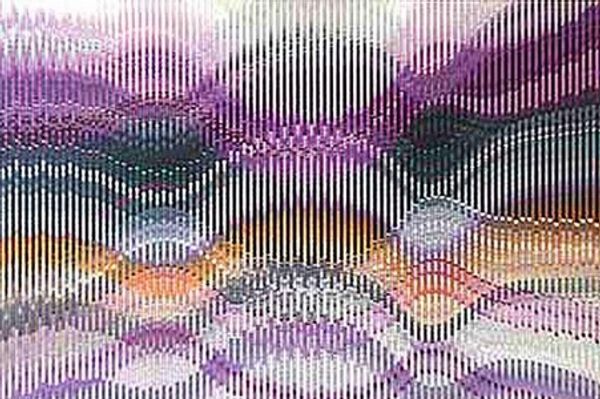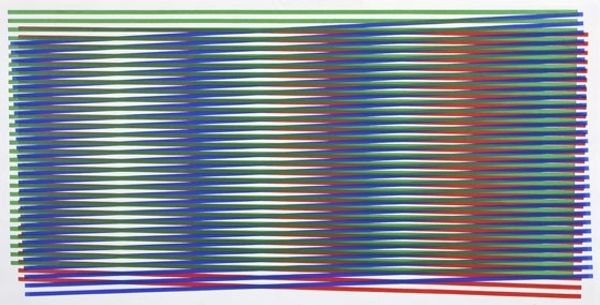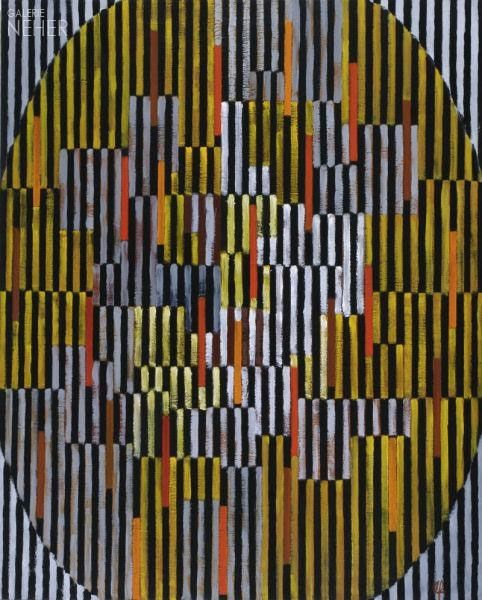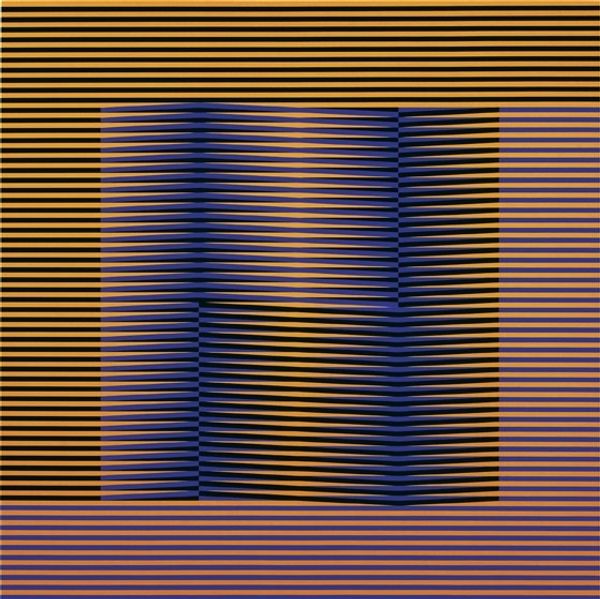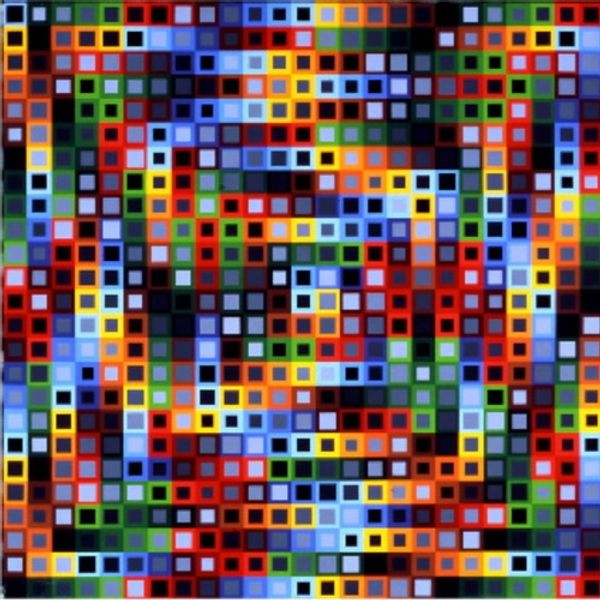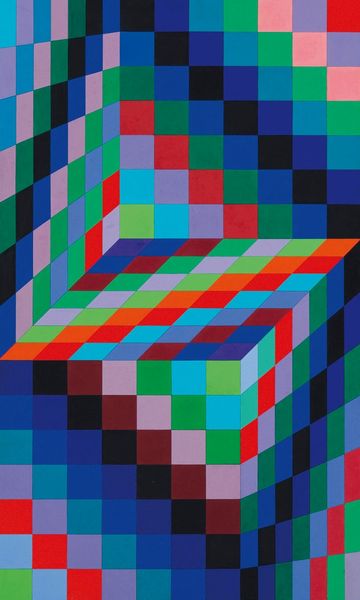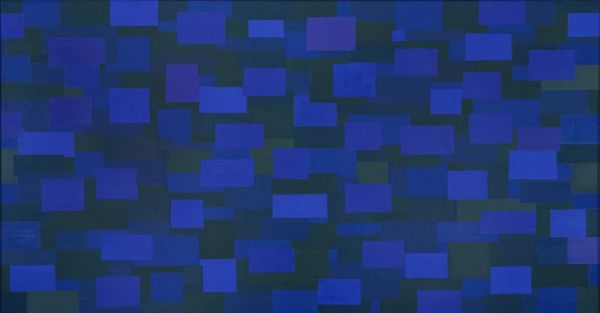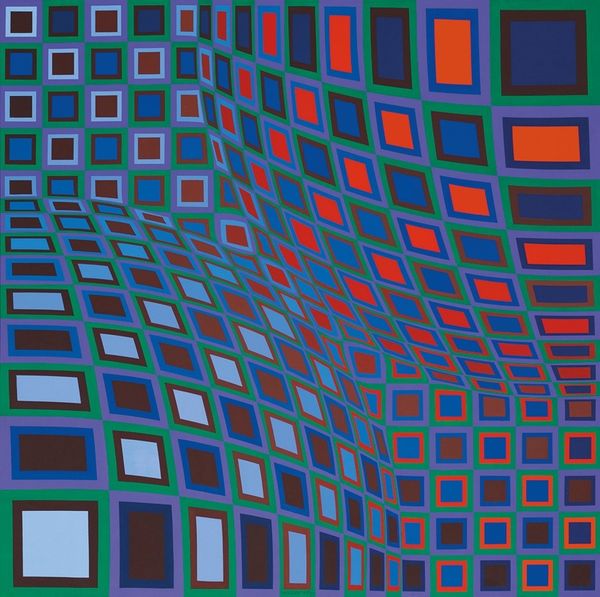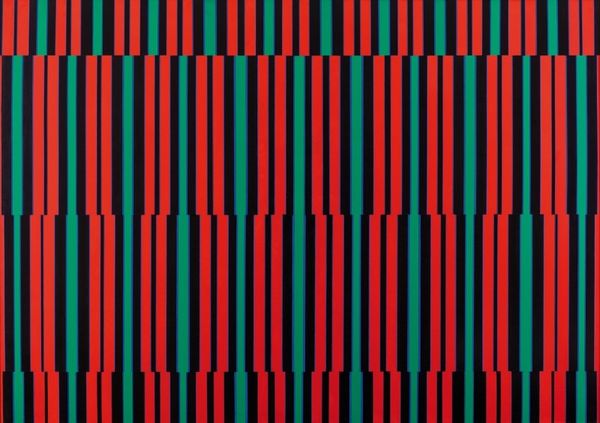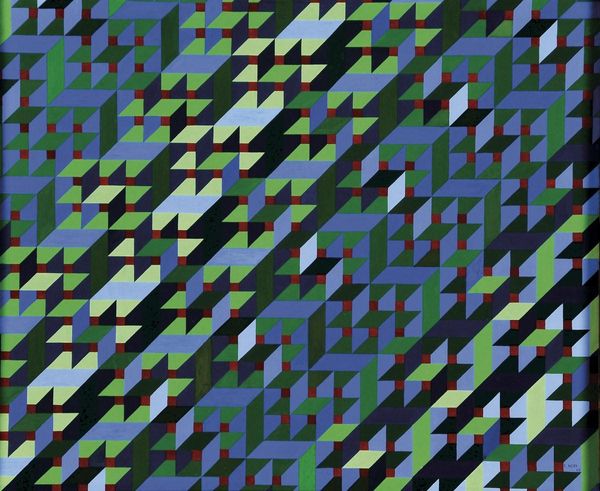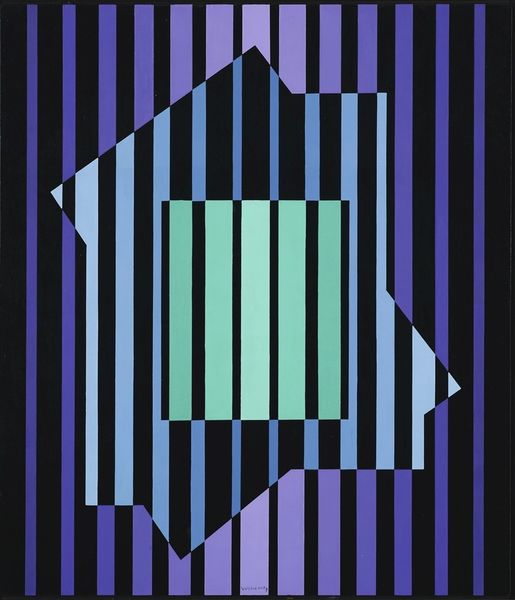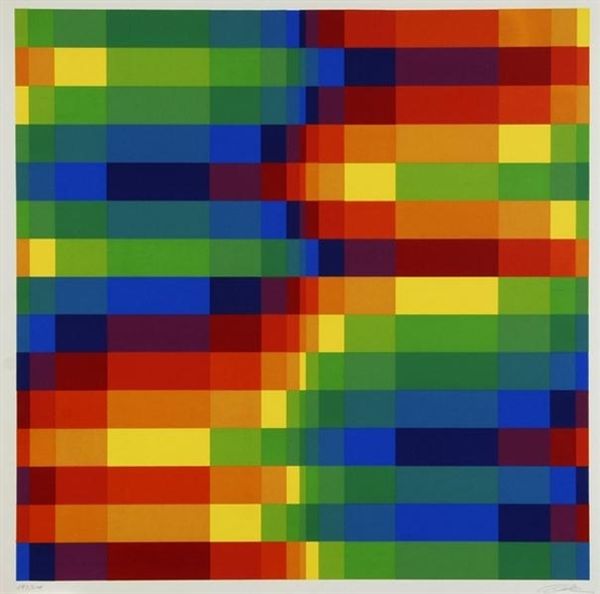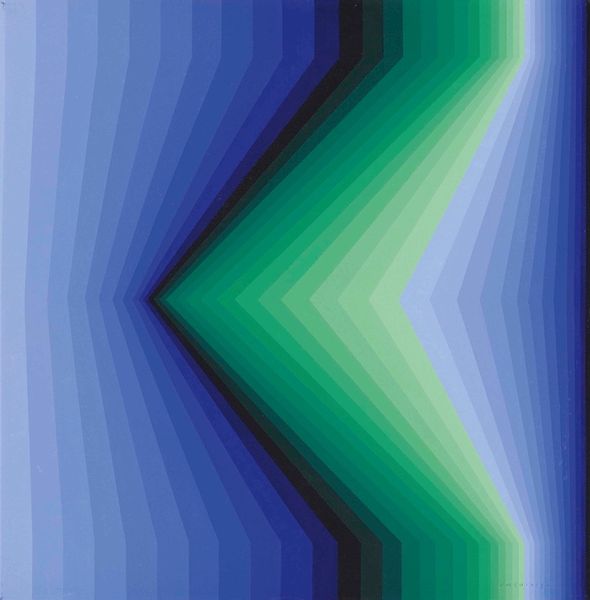
painting
#
abstract-expressionism
#
painting
#
pattern
#
pattern
#
geometric
#
abstraction
#
line
#
hard-edge-painting
Copyright: Adolf Fleischmann,Fair Use
Editor: Here we have Adolf Fleischmann’s painting, #156, created in 1958. It’s a vibrant field of vertical lines and blocky shapes, all in cool blues and blacks, punctuated by stark white and red. It’s almost dizzying to look at! What do you see in this piece? Curator: Beyond the visual vibrancy, I see a commentary on the anxieties of post-war abstraction. Fleischmann, part of the Hard-Edge painting movement, presents us with geometric forms that aren’t simply about aesthetic pleasure. Think about the social and political context of the late 1950s – the Cold War, the rise of consumerism. Does this rigid, almost regimented, pattern speak to you about that era's preoccupation with order and control? Editor: That’s a compelling point. I was focused on the visual rhythm, but now that you mention the historical context, those tightly packed lines almost feel oppressive. But then the pops of red disrupt that order. What do they signify? Curator: The red could be interpreted as a rebellion, a spark of individuality fighting against the conformity. Consider the feminist theories emerging at the time – a challenge to patriarchal structures. Or perhaps it’s a commentary on the societal pressures to conform, with those red elements representing a struggle for self-expression against the backdrop of societal expectation. What do you think of that? Editor: I like that interpretation. It adds another layer of complexity, seeing the painting not just as a formal arrangement of shapes and colors, but as a statement about the individual within society. Curator: Precisely. By examining art through the lens of social and political history, we can gain a deeper understanding of both the artwork and the society that produced it. Editor: This has totally changed how I see abstract art. It's not just about color and form, it's about history and identity. Curator: Exactly. It is about understanding art's ongoing conversation with culture and ourselves.
Comments
No comments
Be the first to comment and join the conversation on the ultimate creative platform.
